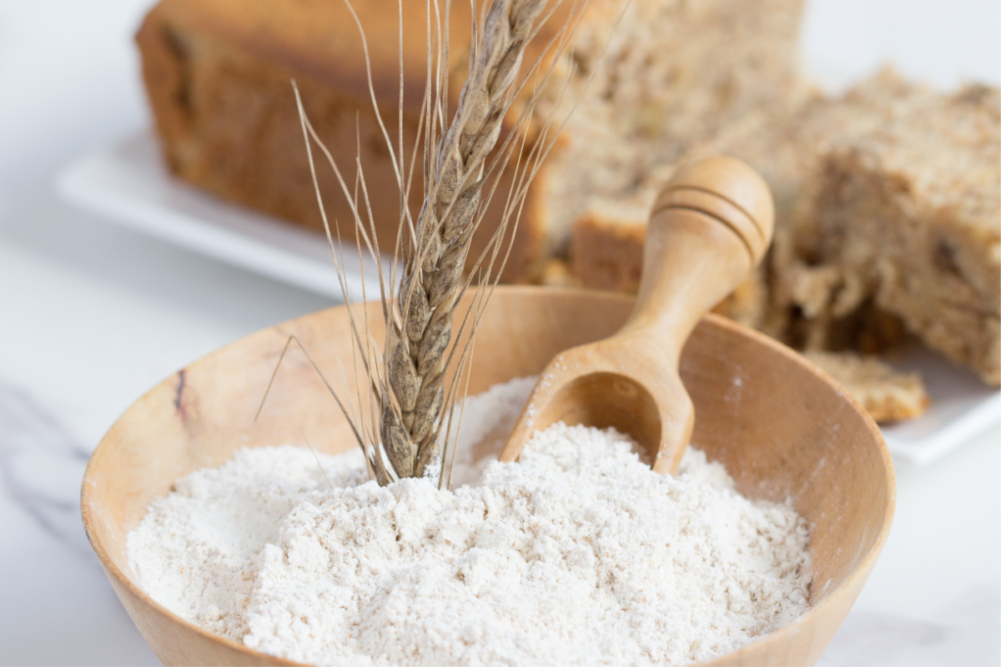WASHINGTON — The 2020 Dietary Guidelines for Americans should wholeheartedly recognize the nutritional benefits of enriched grains in the diet without dialing back its heightened encouragement of whole grains intake, according to the Grain Chain, a coalition of grain-based foods organizations.
The letter was sent to Kristin Koegel, a nutritionist with the US Department of Agriculture Food and Nutrition Service, Center for Nutrition Policy and Promotion. The USDA together with the Department of Health and Human Services is responsible for publishing the DGA every five years.
Following up on comments submitted in July 2019 and January 2020 to the Dietary Guidelines Advisory Committee, the Grain Chain spelled out the industries priorities in a five-page letter written in response to DGAC’s Scientific Report, which cast “refined grains” in a negative light. Altering that characterization ranked first on the group’s five priorities summarized at the letter’s outset:
- “Correct the negative representation in the Dietary Guidelines Advisory Committee (DGAC) Scientific Report regarding enriched refined grains, as there is strong evidence to support and encourage consumption at all life stages;
- “Reinforce the balance of both whole and enriched grains as foundational nutrient contributors across dietary patterns;
- “Strengthen practical and culturally appropriate recommendations and education regarding the essential role of the nutrients and food components provided by enriched grain foods and their impact on improving diet quality;
- “Amplify the DGAC report’s recognition of whole grains as one of three food groups that are ‘fundamental constituents of a healthy dietary pattern’ to further increase whole grain consumption at all life stages;
- “and leverage Grain Chain leadership/partnership opportunity with USDA/HHS, other government agencies and academia to fill in research gaps and standardize data collection methods regarding enriched grain foods, flours, and ingredients.”
The Grain Chain said it was gratified by the report’s characterization of whole grains as “one of the three groups that are fundamental constituents of a healthy dietary pattern,” together with fruits and vegetables. The grains group called the recommendation to consume half of grains as whole grains and the remainder from enriched as a “foundational” element of Dietary Guidelines.
“Yet, we were extremely concerned to see consistent language throughout the DGAC’s report linking ‘refined grains’ with poor dietary patterns and health outcomes,” the Grain Chain said. “This is particularly troubling since scientific evidence clearly and unequivocally illustrates the key roles of grains — both enriched and whole — in healthy dietary patterns and their significant contributions to diet quality. In fact, refined grain consumption up to 6 to 7 servings per day was not associated with higher risk of coronary heart disease, Type 2 diabetes, hypertension, or all-cause mortality.1 Moreover, total grain intake was not associated with risk of CVD, CHD, stroke, or cancer, but was associated with lower risk of all-cause mortality.
“Given these concerns, the Grain Chain strongly urges the agencies to correct the language regarding the role of enriched grains, the ‘other half’ of the grain recommendation, before developing final guidelines.”
The group summarized previous comments, citing scientific research affirming the positive contributions of enriched gains. Acknowledging that dietary patterns create a helpful framework for nutrition discussions, the consistently critical language aimed at “refined grains” in the scientific study vilifies foods that are “nutritious, economical and appeal broadly across age, socioeconomic and cultural tastes,” the letter said.
“The enrichment and fortification of grain foods have made lasting contributions to public health,” the Grain Chain said. “Of note, enrichment resulted in the eradication of such diet-related diseases as pellagra and beriberi, while fortification with folic acid is credited with significantly reducing the prevalence of neural tube defects (by 35% since 1998). Enriched grain foods also provide shortfall nutrients (iron, fiber) that contribute to positive health outcomes in various life stages.”
Enriched grains also could play a valuable role in bringing consumers to foods that are part of the DGA recommended diet patterns. Bread and other grain-based foods frequently serve as a “base for a variety of other foods and food groups,” the Grain Chain said, calling grains a “key carrier for cultural foodways.” Examples cited include sandwiches “layered with vegetables and protein-packed lean meats, seafood or nut butters, to pasta, rice or pizza accompanied by vegetables and sauces.” Bean, cheese and vegetable-filled tortillas also were cited as were “simple combinations like cereal with fruit and milk or peanut butter and banana toast.”
“In addition, grain foods, both enriched and whole, are affordable, versatile, convenient, and easy to store,” the Grain Chain said. “These qualities are important when crafting the 2020 DGAs since consumers will be more likely to follow guidelines that are based on familiar cultural foods that appeal to all life stages.”
Beyond the specific recommendation that are made in the 2020 DGA, the Grain Chain said it was important to educate the public about the dietary importance of “enriched ‘refined grains’” to avoid confusion about the “other half” of the guidelines’ grains recommendation.
Grain Chain members signing the letter were the American Bakers Association, the American Institute of Baking, the Cereal and Grains Association, the Grain Foods Foundation, the Independent Bakers Association, the National Pasta Association, the National Association of Wheat Growers, the North American Millers’ Association, the Retail Bakers of America, the Wheat Foods Council and the USA Rice Federation.





